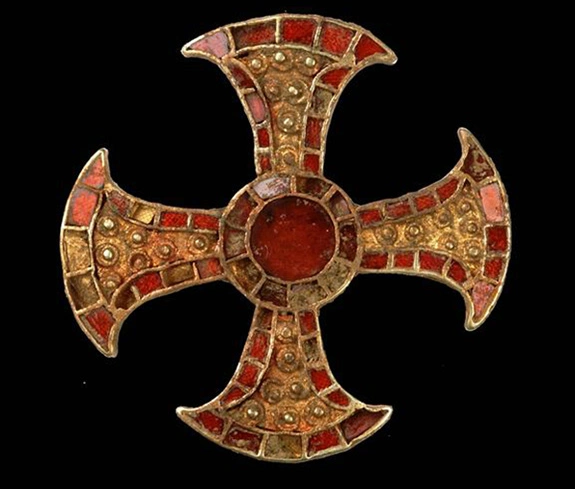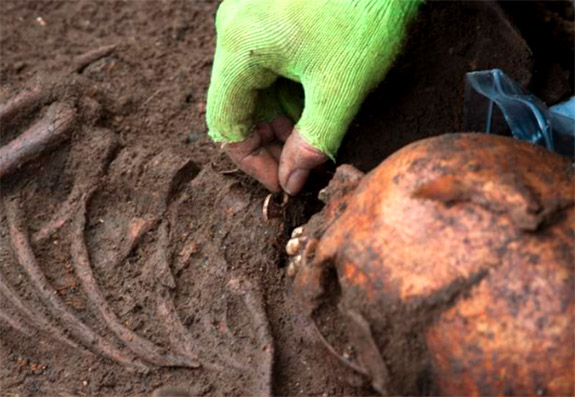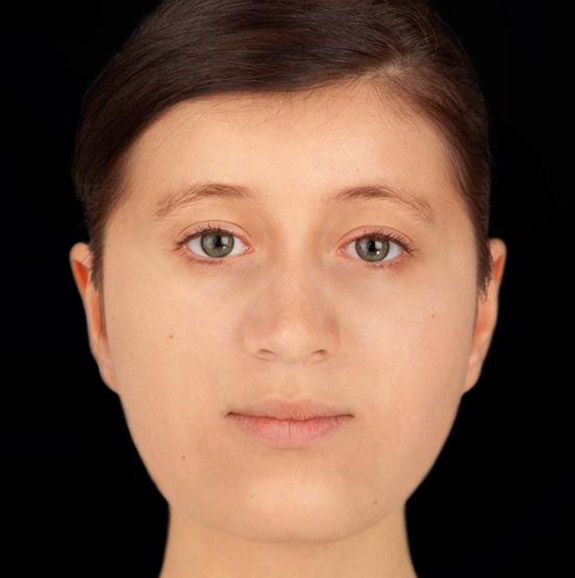English Teenager's 'Trumpington Cross' Offers Glimpse Into Early Christianity
The lavish garnet and gold "Trumpington Cross" that was found with the remains of a 16-year-old girl who lived during the 7th century signals that she was from an elite family and one of England's earliest Christian converts.
In 597 AD, Pope Gregory had dispatched St. Augustine to England on a mission to convert the pagan Anglo-Saxon kings.
The noble class was first to adopt the new religion, so archaeologists from the University of Cambridge believe the teenager discovered by the Cambridge Archaeological Unit at Trumpington Meadows on Cambridge’s southern limits was likely a member of the aristocracy, if not royalty.
One of only five Trumpington Crosses known the exist, the teenager's ornate pendant measures 3.5 cm (1.4 in) in diameter and was inlaid with 63 garnets. The gold loops on the back of each arm of the cross indicates that it may have been worn as a brooch, sewn onto to the front of a garment.
Delicate gold and garnet pins connected by a gold chain were also found near the teenager's neck, a sign that the pins probably secured a long veil to an outer garment of fine linen. Also found near the body were an iron knife, glass beads and a chain which would have hung off her belt.
The body was found in a reclined position on a wooden-framed bed, which is an extremely rare occurrence. Only 18 bed burials have been documented in the UK. Bed burials are more common in Germany, and this is where scientists have been able to add another layer of intrigue to the young woman's story.
Brand new “you are what you eat” isotopic analysis of the young woman’s bones and teeth conducted by bioarchaeologists Dr. Sam Leggett and Dr. Alice Rose, and archaeologist Dr. Emma Brownlee, during PhD research at the University of Cambridge revealed that she moved to England from somewhere near the Alps, perhaps southern Germany, sometime after she turned seven years old.
Leggett and Rose also found that once the girl had arrived in England, the proportion of protein in her diet decreased by a small, but significant, amount. This change occurred close to the end of her young life, showing that the period between her migration and burial near Cambridge was tragically short. Previous analysis indicated that the young woman had suffered from illness, but her cause of death remains unknown.
“So it seems that she was part of an elite group of women who probably traveled from mainland Europe, most likely Germany, in the 7th century, but they remain a bit of a mystery," said Leggett. "Were they political brides or perhaps brides of Christ? The fact that her diet changed once she arrived in England suggests that her lifestyle may have changed quite significantly.”
Forensic artist Hew Morrison brought the girl's likeness to life using measurements of the her skull and tissue depth data for Caucasian females. Without DNA analysis, Morrison could not be sure of her precise eye and hair color, but the image generated offers a strong indication of her appearance shortly before she died.
The image and artifacts from the mysterious woman’s burial will be unveiled today in a major new exhibition at Cambridge’s Museum of Archaeology and Anthropology (MAA). "Beneath Our Feet: Archaeology of the Cambridge Region" will run from June 21, 2023, to April 14, 2024.
“The story of this young woman goes to the very heart of what our exhibition is all about – new research making visible the lives of people at pivotal moments of Cambridgeshire’s history," noted Dr. Jody Joy, the exhibition’s co-curator. "MAA holds one of Britain’s most important collections of Early Medieval archaeology and the Trumpington bed burial is so important. It looks like it still has much more to teach us.”
Credits: The Trumpington Cross and excavation photos by University of Cambridge Archaeological Unit. Facial reconstruction by forensic artist Hew Morrison ©2023.









